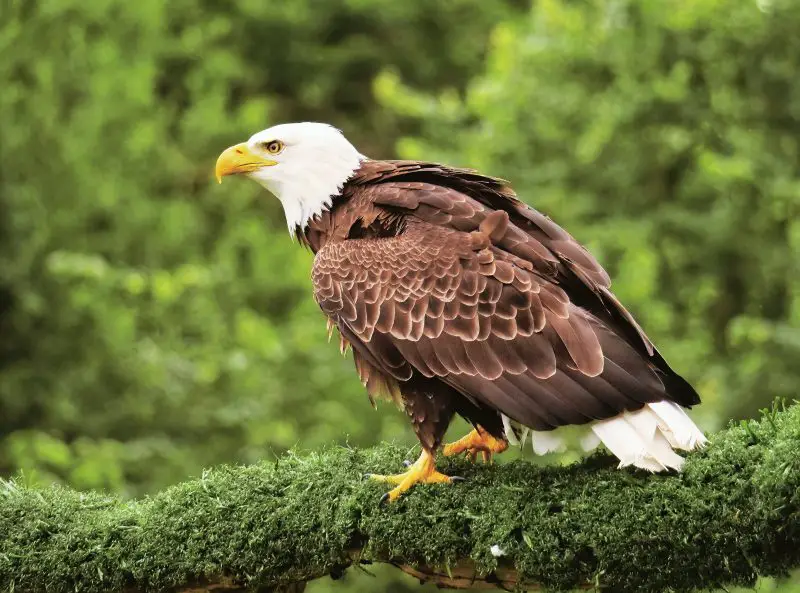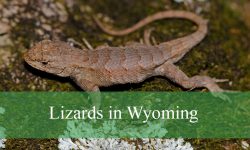Eagles in Utah are a breathtaking sight, soaring across the state’s vast skies and rugged landscapes. With their massive wingspans and powerful presence, these birds of prey are among the most admired wildlife species in the region. From open deserts to alpine mountains, Utah offers prime eagle-watching opportunities throughout the year.
The state is home to three primary eagle species that can be regularly observed by birders and nature lovers alike. Each of these eagles in Utah has its own unique traits, behaviors, and preferred habitats—from winter gatherings near frozen lakes to year-round sightings in remote canyon cliffs.
In this article, we’ll explore the 3 most common eagles in Utah, complete with pictures and identification tips. This guide will help you recognize and appreciate these majestic raptors in their natural environments.
Common Eagles Found in Utah
Bald Eagle (Haliaeetus leucocephalus)

The Bald Eagle is a striking bird of prey known for its powerful build, brilliant white head and tail, and massive yellow beak. Adults typically measure between 28 to 40 inches in length with a wingspan reaching up to 7.5 feet. Females are usually larger than males, as is common among raptors. The body is covered in dark brown feathers, contrasting dramatically with the bright white head and tail once the bird reaches maturity around five years old. Immature Bald Eagles are mostly dark with irregular white patches, making them easy to confuse with Golden Eagles at a distance.
Despite its size and strength, the Bald Eagle’s vocalization is surprisingly weak for such a majestic bird. Its call is a series of high-pitched, whistling chirps that sound more like a gull than a fierce predator. The Hollywood-style eagle screech often heard in movies is actually dubbed in from a Red-tailed Hawk. Bald Eagles use their calls to communicate with mates or defend nesting territory, but they rely more on their imposing size and visual presence to establish dominance.
Behaviorally, Bald Eagles are both hunters and scavengers. They feed primarily on fish, which they catch with sharp talons after swooping low over water. They are also known to steal food from other birds, especially Ospreys, and readily consume carrion such as dead fish and roadkill. They build massive stick nests, often reused and added to for years, resulting in structures that can weigh hundreds of pounds. These nests are usually placed in tall trees or on cliffs near large bodies of water to ensure easy access to food.
In Utah, Bald Eagles are primarily winter visitors, arriving from northern breeding grounds in Canada and Alaska. From November through March, they congregate around the Great Salt Lake, Farmington Bay, and the Utah Lake area. These regions provide rich feeding grounds and suitable roosting trees. The Utah Division of Wildlife Resources even celebrates Bald Eagle Day in February, encouraging the public to observe these raptors in designated viewing areas. While they don’t typically breed in Utah, isolated nesting pairs have occasionally been recorded in the northern parts of the state in recent years.
Golden Eagle (Aquila chrysaetos)

The Golden Eagle is a large, broad-winged raptor known for its dark brown plumage and the golden sheen on the back of its head and neck, from which it gets its name. It is slightly smaller than the Bald Eagle in terms of wingspan, averaging about 6.5 to 7.2 feet, but it appears sleeker and more agile in flight. Adults have uniformly dark feathers with slightly paler flight feathers and a powerful, hooked beak. Juveniles are distinguished by white patches at the base of their tail and on their wings, which fade as they mature.
Golden Eagles are typically silent but may emit high-pitched whistles or yelping sounds, particularly during the breeding season or in territorial disputes. Their vocalizations are far less commonly heard than those of Bald Eagles because they tend to inhabit more remote regions. Nesting pairs may use their voices to coordinate, but these birds primarily rely on their vision and speed rather than sound for communication and hunting.
Golden Eagles are skilled hunters and rarely scavenge compared to Bald Eagles. They prefer live prey and are known for their agility and precision during a hunt. Their diet consists mostly of medium-sized mammals like rabbits, ground squirrels, prairie dogs, and even young deer or bighorn sheep in some cases. They often hunt in wide open spaces where they can glide and stoop down rapidly on unsuspecting animals. Golden Eagles construct large nests on cliffs or rocky outcrops, occasionally using tall trees if available in open landscapes.
In Utah, Golden Eagles are widespread year-round residents, especially in mountainous and desert regions. They are frequently seen in the Book Cliffs, Uinta Basin, and San Rafael Swell, soaring high above plateaus and open country. Unlike Bald Eagles, Golden Eagles do breed in Utah, typically nesting in remote, inaccessible areas to avoid human disturbance. They are particularly associated with wild, rugged landscapes and are a common sight in the eastern and southern parts of the state.
White-tailed Eagle (Haliaeetus albicilla)

The White-tailed Eagle is a rare visitor to North America and even rarer in Utah, but occasional vagrants have been recorded. This massive bird of prey resembles the Bald Eagle in build and posture but differs in several key features. It has a pale head and neck, a strong yellow beak, and uniformly brown body plumage. The most distinctive trait is its wedge-shaped white tail, which contrasts with the rest of its darker feathers. Adults can reach lengths of up to 37 inches and boast a wingspan of over 8 feet, making them one of the largest eagle species globally.
Their call is a harsh, barking cry—far deeper and raspier than the Bald Eagle’s—and is often described as a “krra-krra-krra.” These sounds are most frequently heard during courtship displays or when defending a nest site. In their native Eurasian range, White-tailed Eagles are territorial and can be quite vocal during the breeding season, using both flight displays and vocalizations to mark territory boundaries and interact with mates.
Feeding primarily on fish and waterfowl, White-tailed Eagles are opportunistic foragers. They are known to steal prey from other birds, such as herons or smaller raptors, and will also scavenge carrion along shorelines. Their hunting style involves slow, soaring flights over lakes, rivers, or coastal regions, where they swoop down to grasp prey with their powerful talons. They nest in large trees or on cliffs, often returning to the same site year after year if not disturbed.
Though native to Europe and parts of Asia, the White-tailed Eagle has made rare appearances in North America. Most sightings occur in Alaska or eastern Canada, but recent years have seen a few vagrant individuals venture farther inland, sometimes startling birders and wildlife biologists. As of now, there is no confirmed breeding population in Utah, and any sighting in the state is considered an exceptional event, often reported through rare bird alert networks. Given its similarity to the Bald Eagle, correct identification is crucial and typically confirmed with photographs and expert reviews.
Best Time and Places to See Eagles in Utah
The best time to see eagles in Utah is during the winter months, especially from November through early March. During this period, large numbers of Bald Eagles migrate to the state from colder northern regions, gathering near lakes and rivers where food is abundant. Golden Eagles, on the other hand, can be seen year-round, particularly in remote mountainous and desert areas.
Top locations for eagle watching include Farmington Bay, the Great Salt Lake, and the Bear River Migratory Bird Refuge—prime wintering spots for Bald Eagles. For Golden Eagles, head to the Book Cliffs, Uinta Basin, or the rugged canyons of southern Utah, where they nest and hunt in open, rocky terrain.
Early mornings and late afternoons offer the best lighting and eagle activity, especially near open water or along ridgelines. Many state parks and wildlife management areas also host eagle viewing events in February, making it an ideal time for both beginners and seasoned birders.






